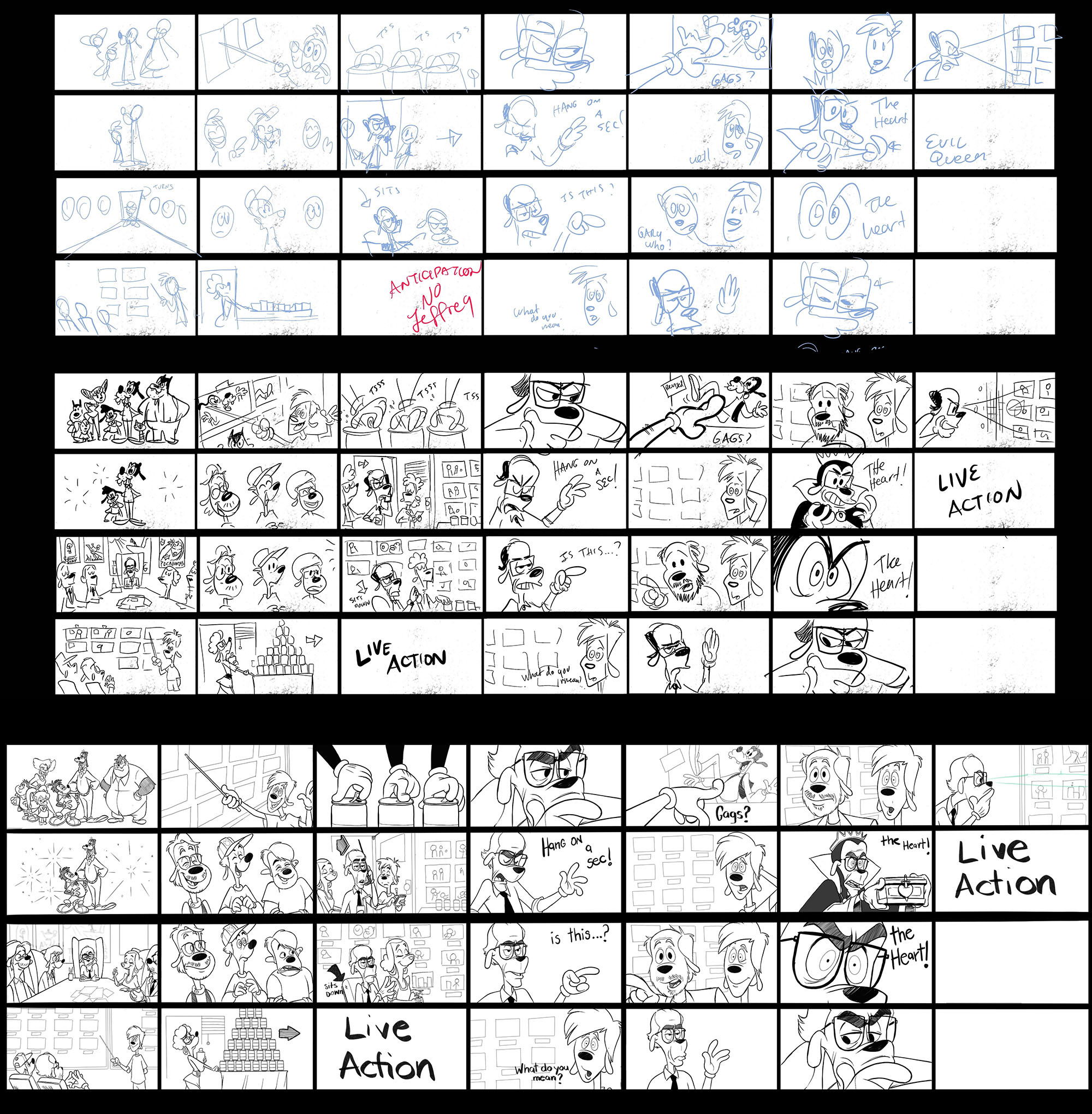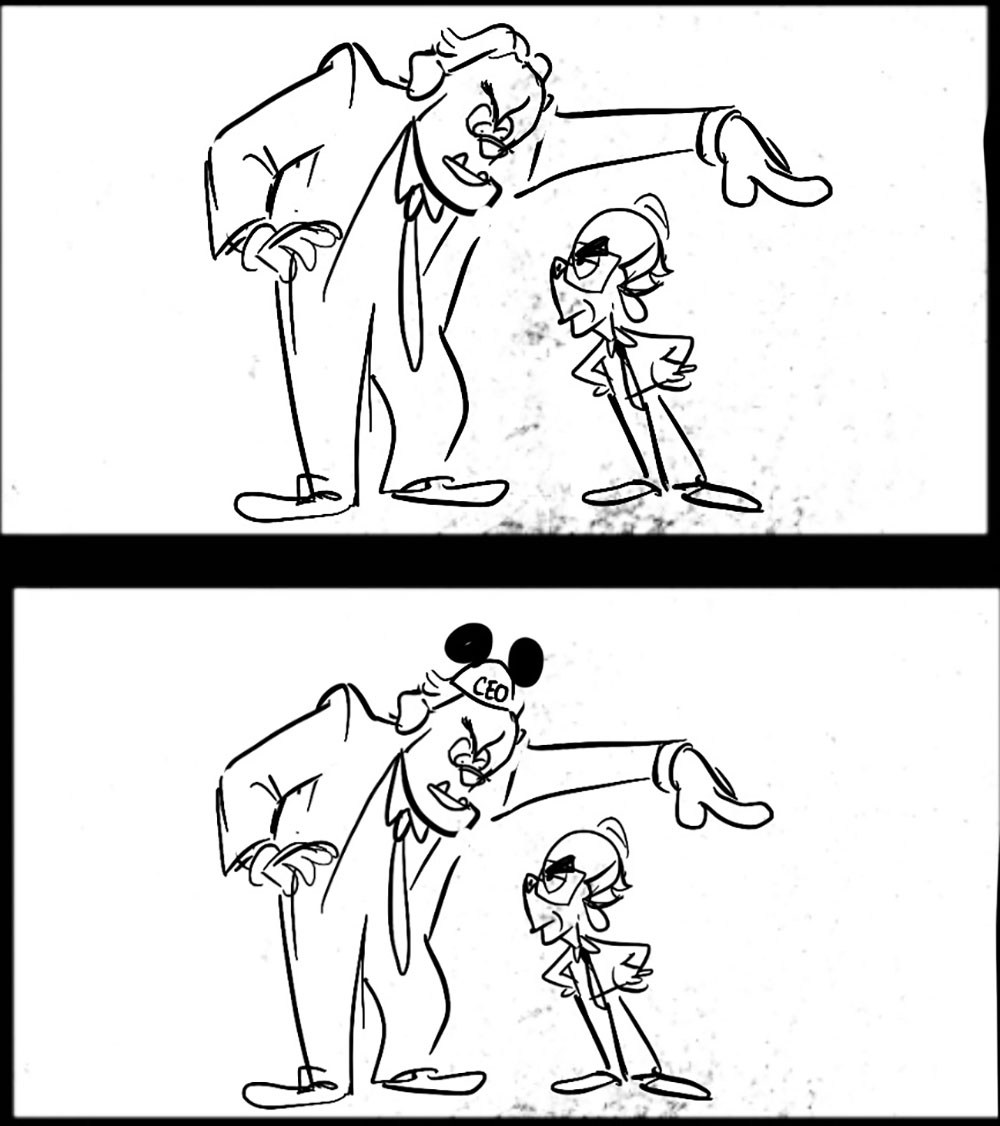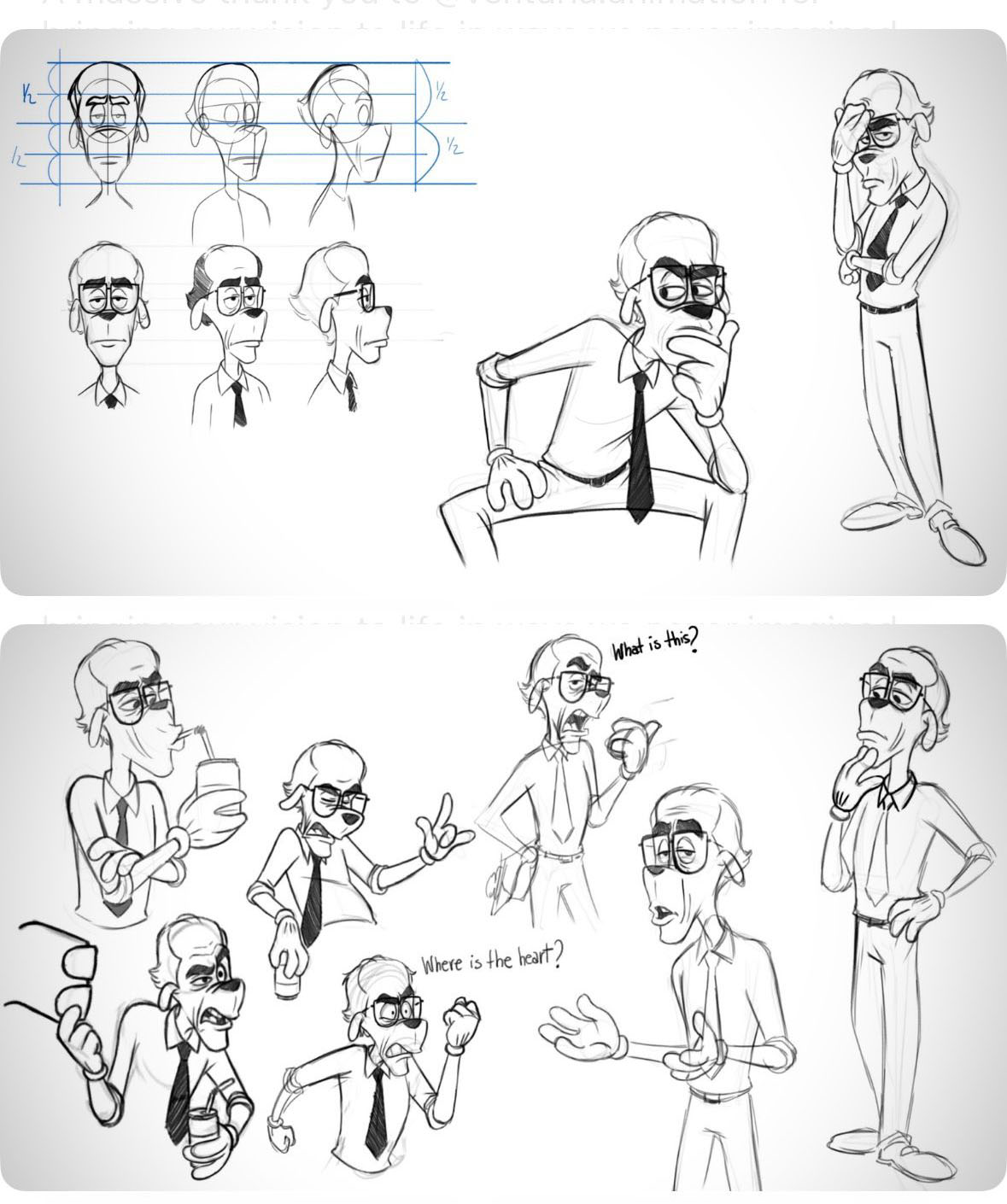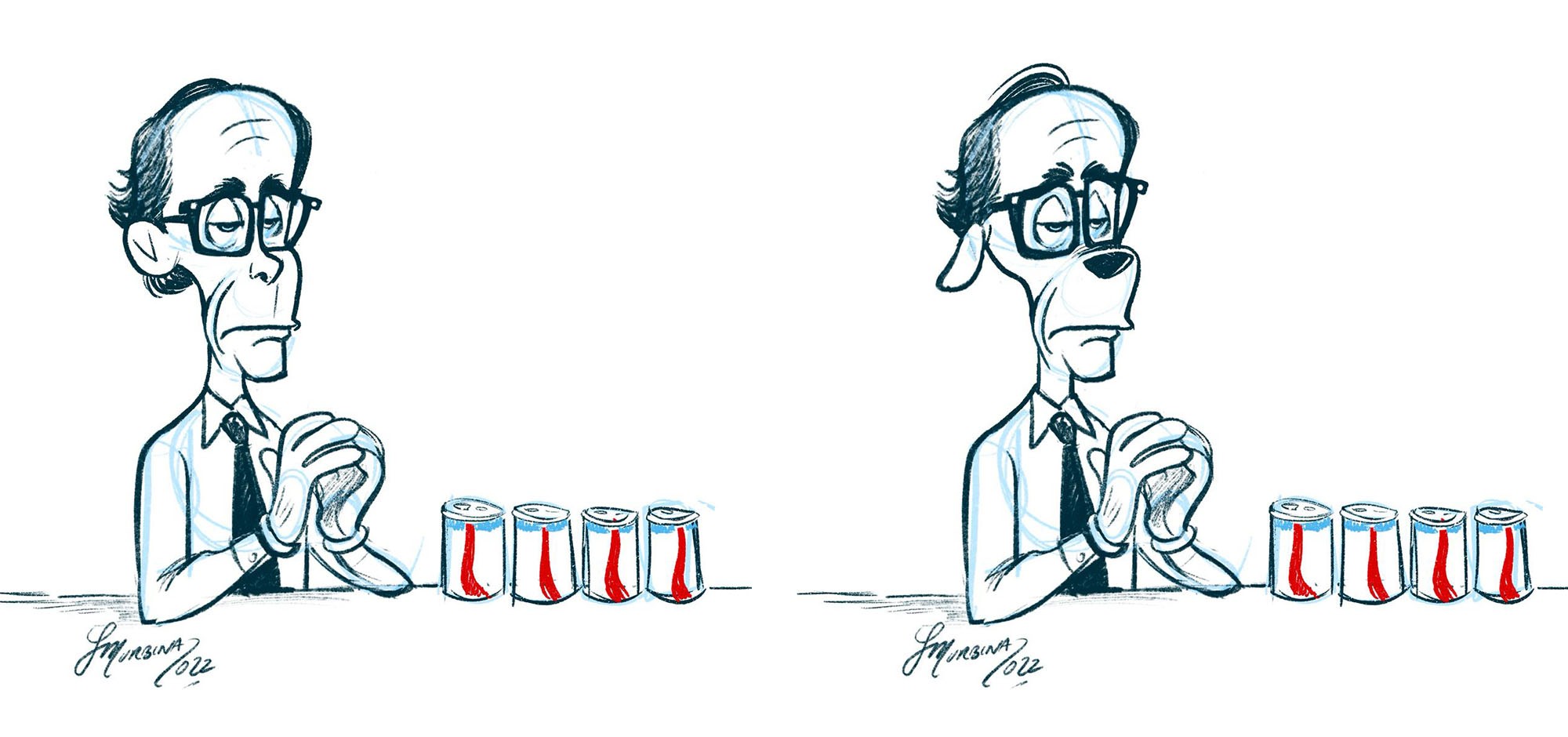[ad_1]
In the 30 years since Walt Disney Television Animation released its critically-rebuffed feature, A Goofy Movie, viewers have since elevated it to beloved millennials cult status. Directed by Kevin Lima (Tarzan), the animated film was always an oddity within the Disney ouevre as it was a contemporary musical that followed the ill-fated road trip between Goofy (voiced by Bill Farmer)and his teen son, Max (voiced by Jason Marsden).
However, A Goofy Movie meant a lot to filmmakers Eric Kimelton (the nephew of Lima) and Christopher Ninness. As filmmakers with access to Lima and his circle of animators, they set about making Not Just a Goof, a low budget, documentary love letter about the film and its passionate fanbase of millennials. Once gifted a treasure trove of donated media from Lima, the directors made the decision to weave in original animation to help illustrate some of the funnier talking head stories about then-Walt Disney Studios chairman Jeffrey Katzenberg. They turned to Bogota, Colombia-based studio Venturia Animation to create several 2d animation blue pencil inserts and the illustrated backgrounds that add impressive production value and even some laughs to the finished doc.
Not Just a Goof started streaming on Disney+ last week to celebrate A Goofy Movie’s 30th anniversary, so Cartoon Brew caught up with Venturia founder Juan M. Urbina to find out how they got involved with this project, the elements they created for the film, and how they approached those very funny satirical Katzenberg pieces.
First, a clip from the film:
Cartoon Brew: When you were approached by Kimelton and Ninness to create animation for this doc, did you have immediate interest?
Juan M. Urbina: This was a very important one for us. It held a special place in my heart because it’s traditional animation and because we got away with showing the rough blue pencil animation that I grew up on. I actually studied classical animation as the last batch of kids who studied pencil and paper. I studied in Toronto. And it’s kind of funny because right now, kids must be feeling the same way about animation with AI. When I graduated, which was the early 2000s, there was a scare around classical [animation] dying because everything was digital. There’s a similar feeling now of, “Should I study this, or are they going to replace me?” The beautiful thing about this documentary is that we animated it and it was both an economic [and artistic] decision to not go ink-and-paint with full backgrounds and full compositing. It was intentional. Like had they had the budget to maybe produce that, I think I would have gone with this anyway.

When did they first approach you?
We spoke to Chris and Eric in 2022. We started talking and we did a lot of pre-production. This whole thing, with the design, took a few weeks. And then storyboarding and the animatics. I usually like the directors to approve the animatics, and from then on, it’s just an easy road, with quotation marks. We delivered in 2023, in April. It didn’t take a whole year. Maybe six months.
As a micro-budget film, did you work out a flat fee with them to make it possible for them to work with you?
We were partners in this project and we believed in this project since the very beginning, so we actually have a stake in it. We knew that we wanted to go full on animation. We didn’t want to offer a fee for cutout animation, because you need to go all the way. And we really went all the way, and then we went the extra, extra mile with that last bit of animation even though we didn’t have that in our initial investment pitch. We were like, “No, we have to do it right.”
Did they know exactly what they wanted or did it evolve as they worked through their edit?
Actually, there was an evolution. They knew early on they wanted animation. Chris and Eric are two guys with full time jobs in the industry. Chris is an editor at Hulu right now. Back then, he was editing trailers and I think that’s why the trailer for the film is so good. Eric is in vfx and is Kevin Lima’s nephew.
Originally we were going to do just the behind-the-scenes story, but then the project evolved into a more personal story. The filmmakers spoke to Kevin, and Kevin was like, “You have to put yourselves in the film. Otherwise it will be just like a BTS informative documentary.” And so, with the last chapter of the story, there was even more of a need to call on the powers of animation. I feel like animation can be done in documentaries or biopics, sometimes even better than live action because you know it’s not real. I think the stories really come to life with animation in that sense.
Why did they say they wanted to animate some of the anecdotes, especially the ones featuring Jeffrey Katzenberg?
Urbina: You see it in the documentary, Kevin has a basement full of VHS tapes. He has maquettes. They found all of this stuff. And then, they interviewed all these people and they gave them all these stories and a lot of fun facts including behind the scenes stories about Katzenberg, who kept popping up. These guys decided that we needed to animate them.

The rough, blue line style of 2d animation keeps you in the era of the ’90s when they made the film, but also allows for a lot of humor. Did you create them traditionally, or composite it digitally?
We didn’t do it on actual paper. I would have liked to, but the iterations we did were in animation software. But we tried to go as close as possible to the actual pencil versus paper.
And I should mention that the compositing was not a very easy thing. The animation layer, usually in productions that are full color, come in with a fill. This was just the rough animation on top of a very rough background. The supervisor had to work their way into doing a lot of tests to not just ask the animators to click and fill with a white layer. You’ll see a blur halo around the designs, so it was trying to compromise what looks polished enough and what looks like an animation test. Because legit animation tests, they’re just characters on top of a background. We, as animators, know how to look at that. But the audience would have been so confused. You can’t ask a regular Joe to understand the way we do it in animation.

Since this was a modest production, how did you build your team?
The animation team was composed by one lead animator, who was Nelson Cabrera. He’s really good with the classical Disney animation style, and he helped me with the character design. Once the designs were done and approved, he went on to Disney-fy them a little bit more. We also had a supervising animator [Mauricio Vargas] who gave him notes. I usually have a guy that’s really into the thing, and then someone who is more into the general aspects of it to help them get out and see the whole picture, right? We wanted the animation to be really fluid, so there were a lot of people helping with the inbetweening. There was no ink-and-paint, but we had to work the drawing and make it clear enough.
Let’s talk about the Katzenberg sequences. Was there ever a concern about how far to go with his characterization?
People don’t know this, but this was a very indie project. After it was made, it was [producer] Don Hahn who championed it and took it to Disney. He was like, “Look at this beautiful thing!” The people at Disney+ were like, “The 30th anniversary is coming up, so, yeah, makes sense.” The company supports the documentary right now, but it’s not a Disney corporate piece. It was very much a fan film.

Who designed the caricature’s overall look?
I designed the Jeffrey Katzenberg character. I think people know Jeffrey more from his Dreamworks Animation days with his shaved head. But back in the ’90s, he still had that nerdy look. I played around with the look of it. The first thing that I pitched [the directors] was, “Let’s do them as dogs.” I did a human version of Jeffrey and then as a dog because he looks good with the dog nose. I told them that we should set them in the Goofy-verse. It’s a very meta thing, like the ultimate Easter egg. And then the blue pencil thing, to keep it rough animation. Those two things were the most important things that I brought into the picture.
How many iterations of Katzenberg were there?
Well, Kevin [Lima] is married, of course, to Brenda Chapman, who also worked for Jeffrey. She directed The Prince of Egypt. We all knew Michael Eisner was a very tall guy and Jeffrey Katzenberg was short. But he’s also lean. Brenda looked at [my sketch], and she goes, “Oh, Jeffrey needs to be shorter.” So, I’m like let’s make him shorter and then here you go. And she said, “Oh no, he needs to be shorter.” She was the one who gave us the perfect note. She pushed for making him cartoonish and ridiculously short, and from that sprung out some of the funny gags. I storyboarded it myself, that gag of him coming in and the camera has to pan down. And he has a huge cell phone. It was a really fun character to play around with. He became a very important character in the documentary.

Did you produce other elements for the film?
For a couple of shots and scenes, I wanted to use my art department as well. There’s a beautiful map scene which explains that A Goofy Movie was not animated in Burbank, and they had to send it to France. We played around with the look of that iconic map from the original movie. And there’s a couple scenes in which we saved on animation, but we invested in painted backgrounds. In the scene where the company found out that The Goofy Movie is a thing, we painted it and composited that scene in a stylized way because we felt like [Goofy] cosplaying and the whole convention thing had to be shown in color so that people got what we’re referencing. The animation team did a wonderful job, of course, but also the backgrounds team. They put in a lot of Easter eggs.

Regarding the final animation that reveals Chris’s personal attachment to A Goofy Movie — was that a late addition and was he nervous about having that highlighted in an animated sequence?
They came to me with the idea of doing animation that resembles [the movie]. They didn’t really know how to put it. They didn’t really say it was like A Goofy Movie, they just said, “Can you animate something beautiful so that it’s not cheesy actors right at the end?”
I think once Chris made the step forward — almost like the third installment of Indiana Jones when he did the leap of faith — I think once he was convinced by Kevin to put himself in the film, he went all the way. He talked openly about the relationship with his dad and all the stuff that happened when he was a kid. Of course, I had to ask him to send over reference photos for that. I really wanted to capture the cute side of the Disney design and the Disney appeal; we wanted that.
And I went as far as to ask him personal stuff, like if he remembers the day [his dad] started to come back again? I gave specific instructions to the animator to make it his own. I think the animator brought in a lot of the acting, but he also suggested with the parents, “Let’s never show their faces.” It was very emotional. We thought that maybe we’d color it so that it’s different, but then decided to keep it as, in the same style. It’s a beautiful moment.
[ad_2]
Source link




